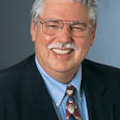MARKET WATCH: Oil prices increase in hopeful markets
The front-month crude contract increased 0.7% to a 3-month high Aug. 21 in the New York futures market on the “trifecta of a weakened dollar, optimism for European stimulus, and ongoing Middle East tension,” said analysts in the Houston office of Raymond James & Associates Inc.
“The euro gained against the dollar as [German Chancellor] Angela Merkel begrudgingly signaled support for concessions in Greece yesterday, and speculation continues in regards to stimulus plans for the Euro-zone,” Raymond James analysts reported.
However, crude prices and equity markets were down in early trading Aug. 22, led by Asia and Europe, as traders waited to see if a report from US Federal Reserve officials would indicate any immediate plans to stimulate the economy. Most analysts expect nothing new in the report, however.
Natural gas prices initially were up Aug. 22 on the possible threat to the Gulf of Mexico by an approaching tropical storm.
In other news, the National Association of Realtors reported purchases of US homes increased 2.3% in July, the first gain in 3 months. However, home sales remain below a “healthy” level, according to economists.
In an annual report, the US Congressional Budget Office said Aug. 22 the continuing partisan stalemate in Washington over tax and spending cuts is likely to produce a new recession.
US inventories
The Energy Information Administration reported Aug. 22 commercial US inventories of crude fell 5.4 million bbl to 360.7 million bbl in the week ended Aug. 17, far exceeding the Wall Street consensus for a draw of 300,000 bbl. Crude stocks remain above average for this time of year, however. With end of the summer driving season quickly approaching, gasoline inventories dropped 1 million bbl to 202.7 million bbl last week, less than the 1.4 million bbl decline analysts expected. Both finished gasoline and blending components decreased last week. Distillate fuel stocks increased by 1 million bbl to 125.2 million bbl, exactly as the market anticipated. Nevertheless, distillates are still below average for this period.
Imports of crude into the US fell 510,000 b/d to 8.2 million b/d last week. In the 4 weeks through Aug. 17, US crude imports have averaged 8.5 million b/d, down 593,000 b/d from the comparable period in 2011. Gasoline imports last week averaged 777,000 b/d while distillate fuel imports averaged 82,000 b/d.
The input of crude into US refineries decreased 273,000 b/d to 15.4 million b/d in the same period with units operating at 91.2% of capacity. Gasoline production declined to 9.3 million b/d, but distillate fuel production increased to 4.7 million b/d.
Energy prices
The September contract for benchmark US light, sweet crudes climbed 71¢ to $96.68/bbl Aug. 21 on the New York Mercantile Exchange. The October contract rose 58¢ to $96.84/bbl. On the US spot market, West Texas Intermediate at Cushing, Okla., was up 71¢ to $96.68/bbl.
Heating oil for September delivery increased 3.12¢ to $3.12/gal on NYMEX. Reformulated stock for oxygenate blending for the same month gained 3.44¢ to $3.07/gal.
The September natural gas contract dipped 0.1¢ but closed essentially unchanged at a rounded $2.78/MMbtu on NYMEX. On the US spot market, gas at Henry Hub, La., advanced 6¢ to $2.79/MMbtu.
In London, the October IPE contract for North Sea Brent increased 94¢ to $114.64/bbl. Gas oil for September was up $9.75 to $988.75/tonne.
The average price for the Organization of Petroleum Exporting Countries’ basket of 12 benchmark crudes increased 79¢ to $112.28/bbl.
Contact Sam Fletcher at [email protected].
About the Author

Sam Fletcher
Senior Writer
I'm third-generation blue-collar oil field worker, born in the great East Texas Field and completed high school in the Permian Basin of West Texas where I spent a couple of summers hustling jugs and loading shot holes on seismic crews. My family was oil field trash back when it was an insult instead of a brag on a bumper sticker. I enlisted in the US Army in 1961-1964 looking for a way out of a life of stoop-labor in the oil patch. I didn't succeed then, but a few years later when they passed a new GI Bill for Vietnam veterans, they backdated it to cover my period of enlistment and finally gave me the means to attend college. I'd wanted a career in journalism since my junior year in high school when I was editor of the school newspaper. I financed my college education with the GI bill, parttime work, and a few scholarships and earned a bachelor's degree and later a master's degree in mass communication at Texas Tech University. I worked some years on Texas daily newspapers and even taught journalism a couple of semesters at a junior college in San Antonio before joining the metropolitan Houston Post in 1973. In 1977 I became the energy reporter for the paper, primarily because I was the only writer who'd ever broke a sweat in sight of an oil rig. I covered the oil patch through its biggest boom in the 1970s, its worst depression in the 1980s, and its subsequent rise from the ashes as the industry reinvented itself yet again. When the Post folded in 1995, I made the switch to oil industry publications. At the start of the new century, I joined the Oil & Gas Journal, long the "Bible" of the oil industry. I've been writing about the oil and gas industry's successes and setbacks for a long time, and I've loved every minute of it.